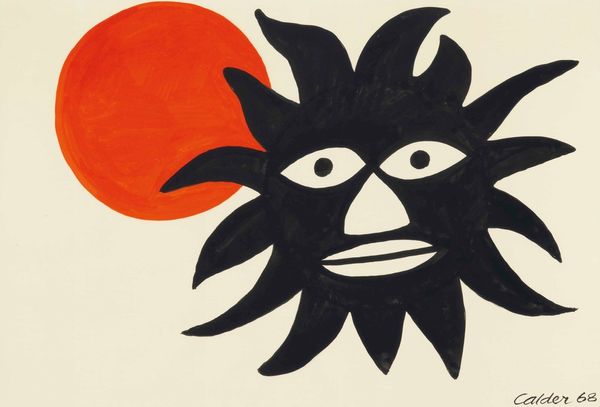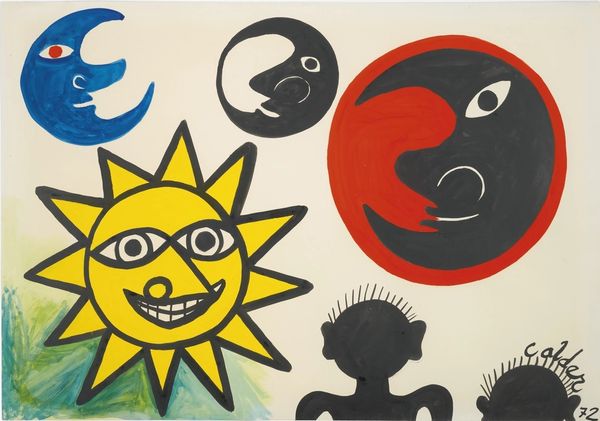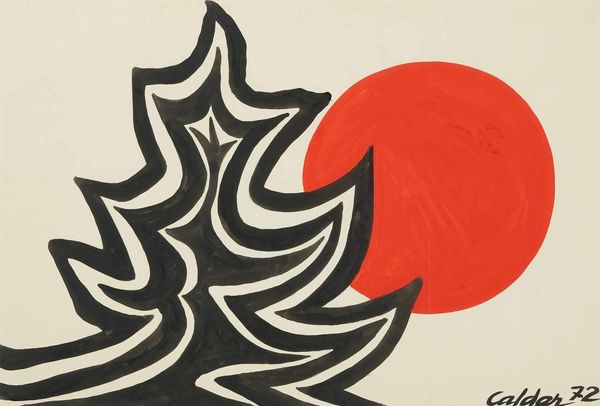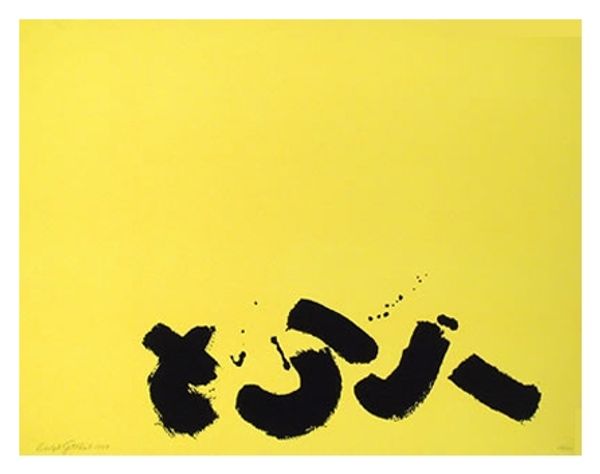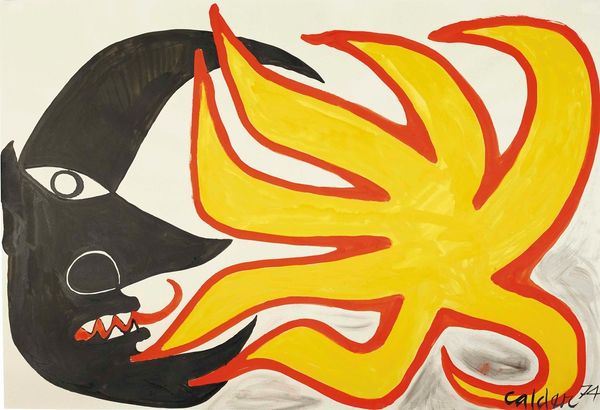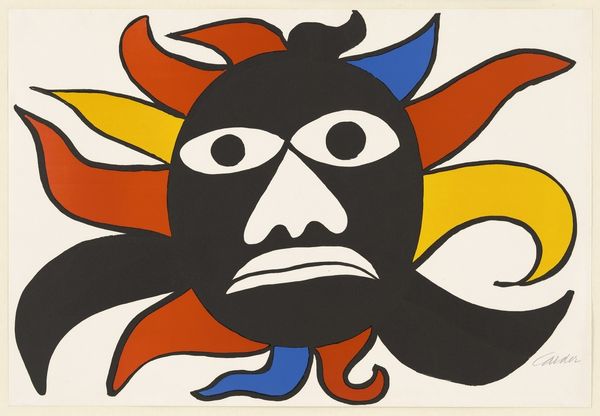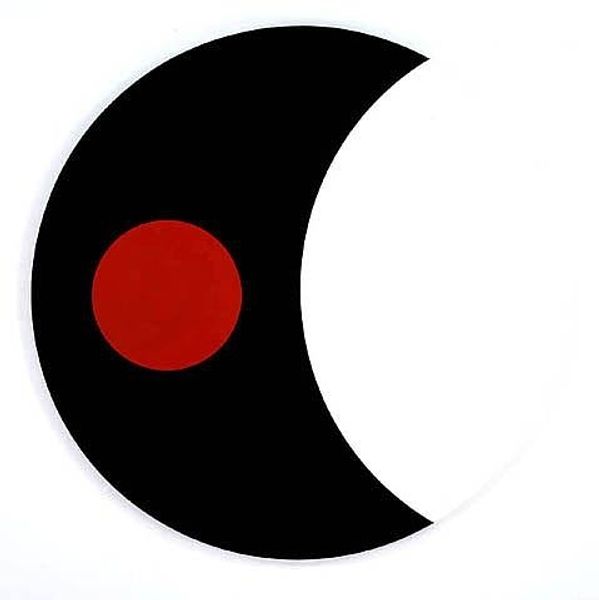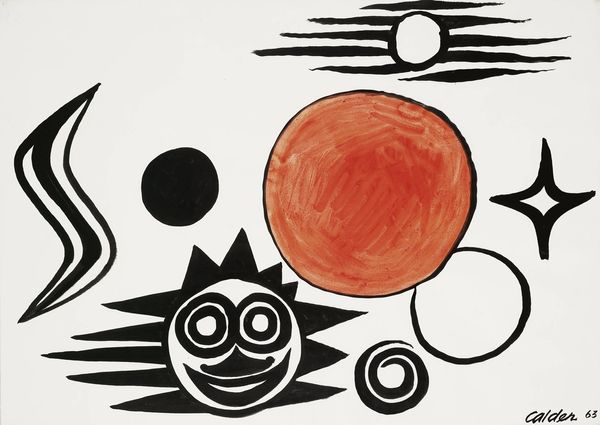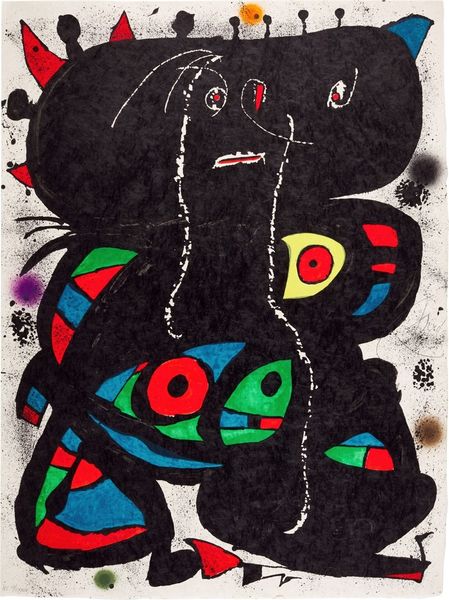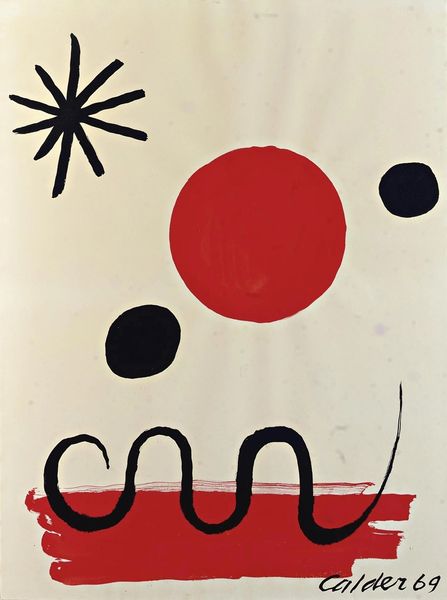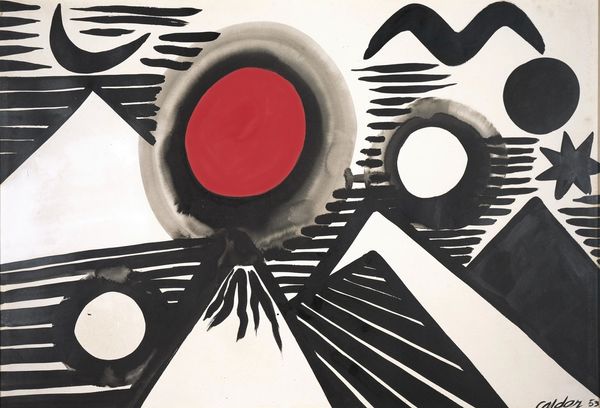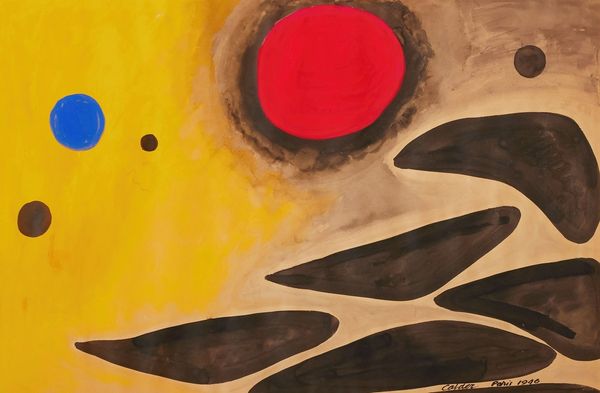
painting, acrylic-paint
#
portrait
#
popart
#
painting
#
pop art
#
acrylic-paint
#
geometric
#
abstraction
#
pop-art
#
modernism
Copyright: Alexander Calder,Fair Use
Curator: Right, let's dive into Alexander Calder's "Red Sun," created in 1968, rendered with acrylic paint. A bold, graphic image, wouldn't you agree? Editor: Striking, isn't it? The first thing that hits me is that playful darkness. It’s almost mischievous. Makes me think of childhood drawings—the sun, but with an edge. Curator: Absolutely. Consider Calder's background in engineering. This deceptively simple composition utilizes precise lines and flat planes of color. There's the hard-edged red circle, balanced by the gestural application of the black pigment creating the sun-face. Notice also the subtle shift of his practice and experimentation with large scale sculpture using industrial techniques which bled into his 2-dimensional work at this time. Editor: Gestural indeed! Look how imperfect those black strokes are up close. And that gleeful grin, almost naive... yet that very directness is what's so disarming. Is it happy, or something else entirely? It feels deeply felt. I swear I even saw a mobile with these characters once. Curator: That feeling aligns with Calder’s overarching philosophy of bringing art closer to life, to the everyday. He embraced industrial materials but aimed for accessibility, for joy, and often using bright colors that allude to children’s toys. There’s also the economical use of the paint, particularly within the white backdrop where there are slight traces of underpainting visible beneath. It asks, what makes this painting a "painting" rather than simply craft? Editor: It makes you wonder. Makes you feel a lot, actually. Thinking about his mobiles, and those heavy shapes suspended with such lightness...I feel that same push and pull here, a real emotional levity. That raw application just vibrates with an internal feeling. I have to add I like his choice to call this a sun too. It feels very elemental somehow, which given the space race in 1968 seems both backwards-looking, but with that pop-art modernity he's showing the public, maybe its the everyman’s place within progress? Curator: Perhaps it reflects humanity's perpetual fascination with basic elements amid rapid change. He was actively engaging with modern manufacturing. It's easy to think it's just childish simplicity and bold abstraction on the surface, but so much of that emotional depth comes directly from those calculated choices in materiality and manufacturing techniques. Editor: Right, It's deceptive really, isn't it? Under that apparent lightness and whimsy is something very grounded in his creative response. It's definitely a memorable "sun." Curator: Indeed, and with its blend of careful manufacture alongside expressive touches, this is a great object to contemplate when we're questioning easy distinctions between art and the world.
Comments
No comments
Be the first to comment and join the conversation on the ultimate creative platform.
